I hadn’t been to see the High Museum of Art’s permanent exhibit since 1997, when I left to take an interactive TV job in San Francisco. I specifically went today to see the Vogel exhibit that closes June 5th; Fifty Works for Fifty States. In 2008, the couple donated their collection of 2500 works of modern art and divided it among 50 art museums in the same number of states – the High being one of them. And now there’s even a documentary about them. I hope the museum will screen it soon.
I love this photo of the Vogels with their cats by famed Life Photographer John Dominis. Herb was a postal worker, Dorothy a librarian. They both loved contemporary art – to celebrate their engagement in 1961 they bought a vase by Picasso.
Named for Harriet High, the original benefactor who donated her own private residence as a museum to the city of Atlanta. Her portrait  is displayed on the wall at one exit, opposite other benefactors’ names.
I’d been visiting the museum since the late 1970’s when I first moved to town, but it was then housed in a much smaller building connected to the Atlanta College of Art. The architect Richard Meier designed the current building in 1983 and the 2002 addition is by Renzo Piano.
A good cross section of American modernists in the Vogel collection, including William Anastasi’s delicate 2002 and 2003Â ‘Subway Drawings’. I was introduced to him a few years ago by my friend, the conceptual artist Jack Sal, while we were gallery hopping in Chelsea. I’m afraid that my photos have some glare, there was glass on many of the works.
William Anastasi, born 1933. Subway Drawing, 2003. Graphite on paper.
Charles Clough, born 1951. #5 (11 Jan 80), 1980. Enamel on offset lithograph
Charles  Clough. 14 May 1986 -For Dorothy on her Birthday 1986. Enamel on paper.
Jene Highstein, born 1942. Untitled (three vertical forms), 1981. Pastel and graphite on rag paper.
Ronnie Landfield, born 1947. Untitled, 1999. Watercolor on paper.
Ronnie Landfield. Untitled. Signed ‘Happy Birthday, Herb! 8/2003’. Watercolor on paper.
Ronnie Landfield. An Unknown Hour, 1998. Acrylic on canvas.
Michael Goldberg. 1924-2007. Pietrarubbia XI, 1984-1985. Lecturers chalk with acrylic medium.
Richard Tuttle, born 1941. ‘This is the Only Drawing for the last Piece in the Baroque and Company’, 1986. Pencil and Ink on brown paper.
The installation view of Tuttle’s work at the Neue Galerie am Landesmuseum Joanneum in Graz, Austria, 1987.
From the High’s permanent collection, a room of recently acquired prints. These were especially strong:
Robert Beck, born 1959. Untitled 2002 (‘Children as Individuals’ by Michael Fordham/’Light Infantry Platoon/Squad’ US Army) Acrylic paint, charcoal, graphite and ink on paper.
Sam Francis, 1923-1994. (I don’t have the title of this one)Â Aquatint. Gift of the Sam Francis Foundation 2010.
The High has purchased some truly monumental works since I’ve been gone. A room devoted to Ellsworth Kelly and some oversized Alex Katz that I’d not seen before. The Germans Anselm Keifer and Gerhard Richter dominated one area of the contemporary wing.
Anselm Kiefer, born 1945. Dragon (Drache), 2001. Oil emulsion on canvas. Purchased 2003.
I wanted to show a closeup and the edge of the canvas of Kiefer’s work. The museum’s explanation for the painting’s basis in myth and sagas avoid’s Kiefer’s preoccupation with the Holocaust. Rather than a night sky linked to dragons, I read it as the souls of the murdered Jews (with their names and numbers) scattered across an inky sky of constellations. The churning ocean below spews them up with violence, not so much with delicacy -as the label notes.
His bio on the Gagosian site seems more apropos: ‘Kiefer reflects upon and critiques the myths and chauvinism which eventually propelled the German Third Reich to power. His paintings depict his generation’s ambivalence toward the grandiose impulse of German nationalism and its impact on history.’
And two of the museum’s oldies but goodies;
Jonas Lie. American, born Norway, 1880-1940. Path of Gold, c. 1915. Oil on canvas.
Ralph Albert Blakelock, born NYC 1847. Moonlight, c 1883-1889. Oil on canvas. courtesy this Flickr account.
The museum is located just across Peachtree Street from Ansley Park, a National Historic Register district, an area of historic homes and beautiful green spaces.
A palatial apartment for any newly transplanted New Yorker;
Winn Park spans the divide between Lafayette and Westminster Drives and makes for a serene parking spot or a wedding – dear friends were married here 23 years ago in a summery ceremony.




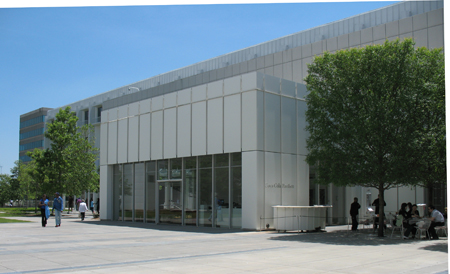





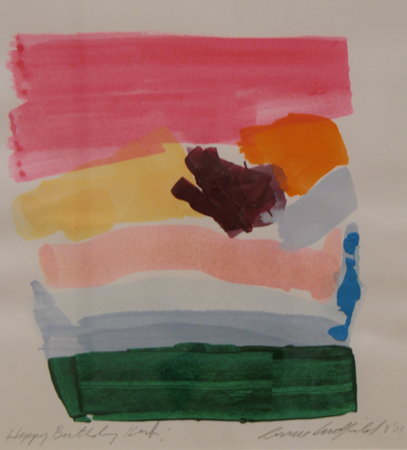




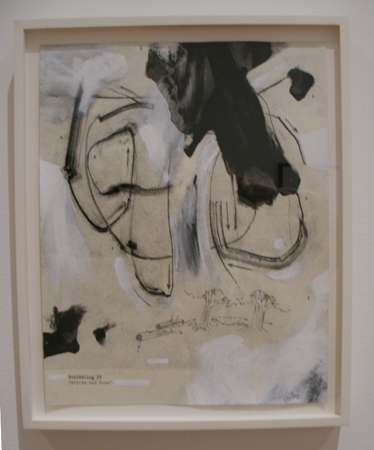

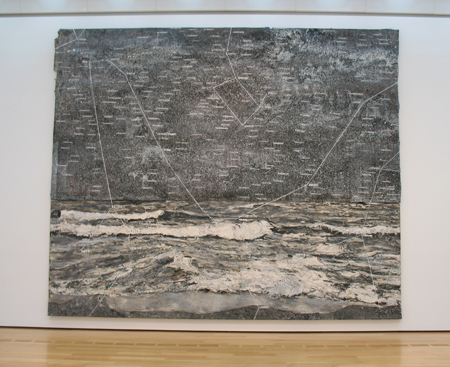









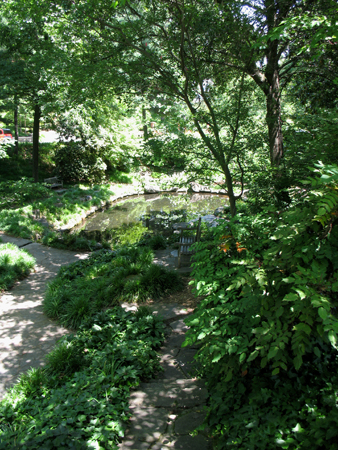

What a fascinating museum! Yet another reason to visit Atlanta. I’d seen the documentary about the Vogel’s but I had no idea they’d divided their collection in such an intriguing manner. It looks like the High got some significant works as a consequence, and the art is certainly housed in a stunning setting, with two superstar architects juxtaposed. (Now they just need another wing my Tadao Ando.) Atlanta seems to be redefining gracious Southern living for the 21st century.
Thanks for this enlightening taste of the High. I think you should be over there conducting guerrilla tours at unannounced times. Watched the YouTube video about the Vogels–wonderful stuff. But how did they do it? How DO you buy art if you’re not a Rockefeller? Did they pay modest prices, or did the artists give them freebies?
How they did it: no children, lived frugally on her salary, spent his on art. It’s all they did. They couldn’t afford popular art of the time (Pop) so they collected minimalist and conceptual works. A real passion and two lives spent developing it.